الأسواق
عند تصميم تدخل إنساني وتحديد ما إذا كان سيتم استخدام المساعدات النقدية والقسائم، يجب أن يكون تحليل السوق جزءًا من تحليل الاستجابة الشامل. وثبت أن دعم الأسواق للعمل بشكل جيد يؤدي إلى تعافي أسرع وزيادة المرونة في المناطق المتضررة من الكوارث.
واستثمرت العديد من المنظمات في تطوير أدوات لدعم تحليل السوق وتفكر في البرمجة القائمة على السوق بشكل أكثر شمولية. يشمل ذلك التدخلات التي تستخدم السوق (مثل التحويلات النقدية إلى السكان المتضررين)، بالإضافة إلى التدخلات التي تدعم الأسواق بشكل مباشر (مثل المنح المشروطة للمتداولين لإعادة تشغيل أسواقهم).
Related initiatives
Featured content

Introduction to Market Analysis
دورة تدريبية
This 30 minute online course provides an introduction to the analysis of markets in emergency contexts, with input from some of the world’s leading thinkers on the topic.

A Practical Guide to Market Analysis in Humanitarian response
دورة تدريبية
A three to four hour online course designed to provide future humanitarian market assessment team members with a solid understanding of theory and steps of market assessments so that they can join assessment teams prepared with a basic understanding of what they will be doing and why.
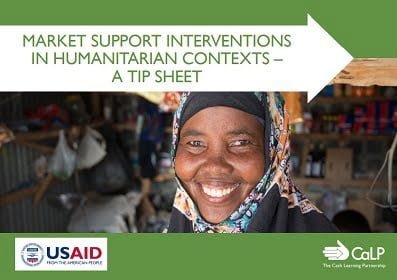
Market Support Interventions in Humanitarian Contexts – a Tip Sheet
Guidelines and Tools
This tip sheet defines what market support programming in humanitarian contexts is, and what it can look like in practice. It enables humanitarian practitioners to systematically consider market support interventions alongside other programme activities. The scope includes support interventions focusing on supply/availability and on demand/access. The tip sheet is based on secondary data...
Latest
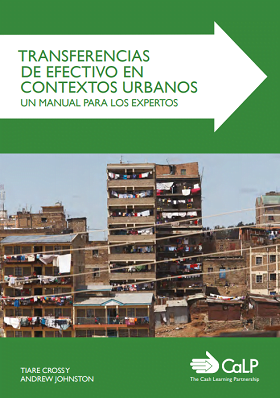
Transferencias de efectivo en contextos urbanos. Un manual para expertos
Report
Al observar el aumento de la población urbana en todo el mundo y su creciente vulnerabilidad ante catástrofes, el the CALP Network, con financiación de la European Commission for Humanitarian Office (ECHO), puso su empeño en investigar el estado actual y el efecto de los programas de...

E-transfers in Emergencies: Implementation support guidelines
Guidelines and Tools
Electronic transfers, or e-transfers, are a form of value transfer that relies on digital payment systems. The great many benefits they can realise for aid recipients and aid agencies alike in terms of increased security, convenience, privacy, speed, reduced operational/transaction costs and logistics,...
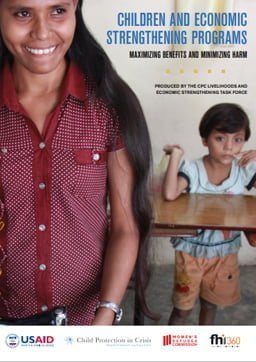
Children and Economic Strengthening Programmes Maximising Benefits and Minimising Harm
Guidelines and Tools
This guide is designed for practitioners designing or implementing economic strengthening (ES) programs in low-income settings that are sensitive to the protection needs and well-being of vulnerable children. The guide provides an overview of key learning about how ES can achieve better outcomes and...

Results-Based Practitioners’ Roundtable Summary Report
Report
This document summarises the discussions held at the Results-Based Practitioners’ Roundtable. This included discussions surrounding the obstacles to measuring the impact of protection and the development of a results-based approach to protection.
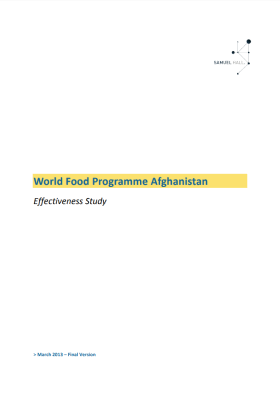
World Food Programme Afghanistan: Effectiveness study
Report
This document presents the findings of a comparative cost effectiveness analysis of four WFP hunger reduction activities. It can be seen as a follow up on the Country Portfolio Evaluation 2012. This study has been conducted using the existing WFP operational costing data and assessing costs benefits...

Theories of Change for Cash Transfers
Report
While there is a large body of literature examining social protection and cash transfers’ (CT) impacts on poverty reduction and development, there is much less on understanding the mechanisms and pathways by which this happens. This report gathers together examples from the literature which attempt to...

Logistics and Administration Guideline for Cash Based Interventions – Annexes
Guidelines and Tools
These annexes are designed to be used alongside the Logistics and Administration Guideline for Cash Based Interventions, which aims to support logisticians and administrators to successfully support cash based interventions (CBIs) and to help technical departments too. The annexes include: a the CALP...

Supply‐Chain Research Opportunities with the Poor as Suppliers or Distributors in Developing Countries
Report
Many social enterprises and some companies have developed supply chains with the poor as suppliers or distributors to alleviate poverty and to create revenues for themselves. Such supply chains have created new research opportunities because they raise issues fundamentally different from those examined...

Women’s Empowerment and Nutrition: An Evidence Review
Report
This paper starts by reflecting on the concept and measurement of women’s empowerment and then reviews some of the structural interventions that aim to influence underlying gender norms in society and eradicate gender discrimination. It then proceeds to review the evidence of the impact of three types...
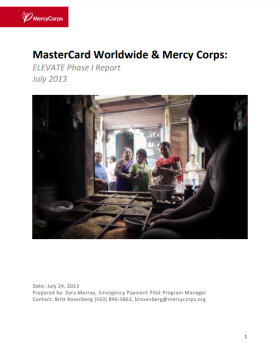
MasterCard Worldwide and Mercy Corps: ELEVATE phase I report
Report
The Nepal pilot focused on testing several key stages in the deployment of mobile vouchers, including the following: Identify a technology partner, Customize a mobile voucher platform, and Use the platform to distribute goods to people in need. Two different types of mobile vouchers (SMS and smartphone...
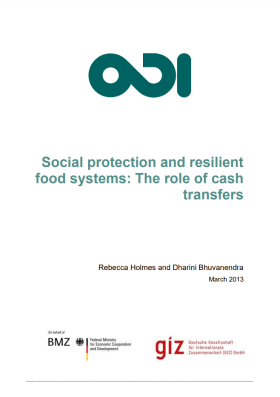
Social Protection and Resilient Food Systems: The role of cash transfers
Policy paper
Cash transfers – a form of social protection – have been increasingly used as a tool for reducing poverty and vulnerability in middle and low-income countries over the past decade. More recently, cash transfers have also been used as an alternative to food aid in humanitarian contexts. The objective...
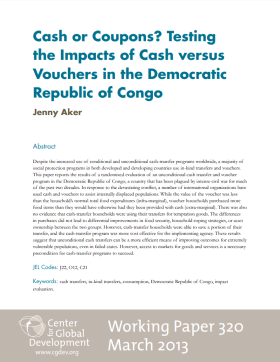
Cash or Coupons? Testing the impacts of cash transfers versus vouchers in the Democratic Republic of Congo
Report
Despite the increased use of conditional and unconditional cash-transfer programs worldwide, a majority of social protection programs in both developed and developing countries use in-kind transfers and vouchers. This paper reports the results of a randomized evaluation of an unconditional cash transfer...
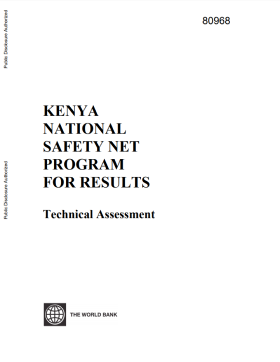
Technical Assessment of the Kenya National Safety Net Program for Results
Report
One of the priorities outlined in the National Social Protection Policy (NSPP) in Kenya, is the government’s ambition to enhance social assistance by developing the necessary institutions and strengthening operational systems while expanding the coverage of such programmes. To help realise this policy...

Market Analysis and Transportation Procurement for Food Aid in Ethiopia
Report
This publication analyzes the contracts between the World Food Programme and private carriers and identifies the determinants of transportation tariffs in Ethiopia and quantify their relative importance.

Water Trucking Market System in Harshin
Report
The Somali region of Ethiopia is an arid area which suffers from a water shortage every year. However, the degree of severity can differ quite markedly from year to year and the existence of microclimates within the region itself means that needs are never uniform. In 2011, the region experienced two...
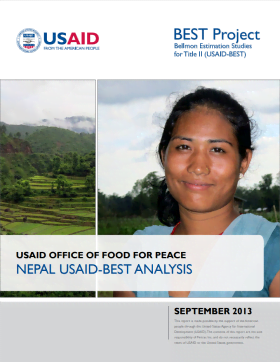
Nepal USAID-BEST Analysis
Report
During the months of July-August 2013, the Bellmon Estimation Studies for Title II (USAID-BEST) team undertook a study of the current state of agricultural markets in Nepal to inform USAID food assistance programming decisions. This USAID-BEST Analysis provides an overview of local markets,...

Guidance for DFID country offices on measuring and maximising value for money in cash transfer programmes
Guidelines and Tools
This document is a revised edition of Guidance for DFID country offices on measuring and maximising value for money in cash transfer programmes which DFID published in October 2011.
The guidance is in two linked parts:
1. Part 1 provides a toolkit which sets out key concepts and metrics for analysing...
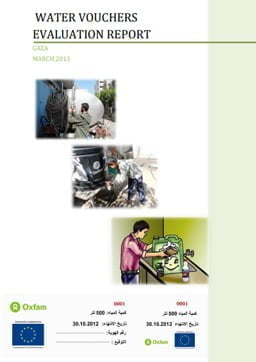
Water Vouchers Evaluation Report, Gaza 2013
Report
A participatory assessment on disaster risk reduction (DRR) was undertaken in GAZA governorate in 2011, OXFAM being the lead agency within the WASH cluster emergency response and preparedness in this area. Three vulnerable neighbourhoods (AL MALALHA, AL MOGRAGHA and AL ZARGA), were identified and an...

Building Women’s Economic and Social Empowerment Through Enterprise: An experimental assessment of the Women’s Income Generating Support (WINGS) program in Uganda
Report
Investing in women is said to be a key to development. Educate her, buy her a cow or goat, or help her start a business and great things will follow: sustained increases in income, greater empowerment and social inclusion, health and education for the children, and (especially in war-affected regions)...
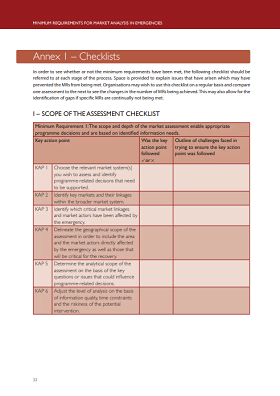
Minimum Requirements For Market Analysis In Emergencies: Annex 1 – Checklists
Report
In order to see whether or not the minimum requirements have been met, the following checklist should be referred to at each stage of the process. Space is provided to explain issues that have arisen which may have
prevented the MRs from being met. Organisations may wish to use this checklist on a regular...